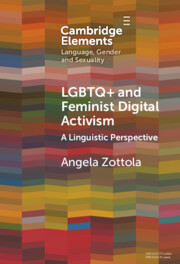Element contents
LGBTQ+ and Feminist Digital Activism
Published online by Cambridge University Press: 08 May 2024
Summary
Keywords
- Type
- Element
- Information
- Online ISBN: 9781009122962Publisher: Cambridge University PressPrint publication: 06 June 2024



